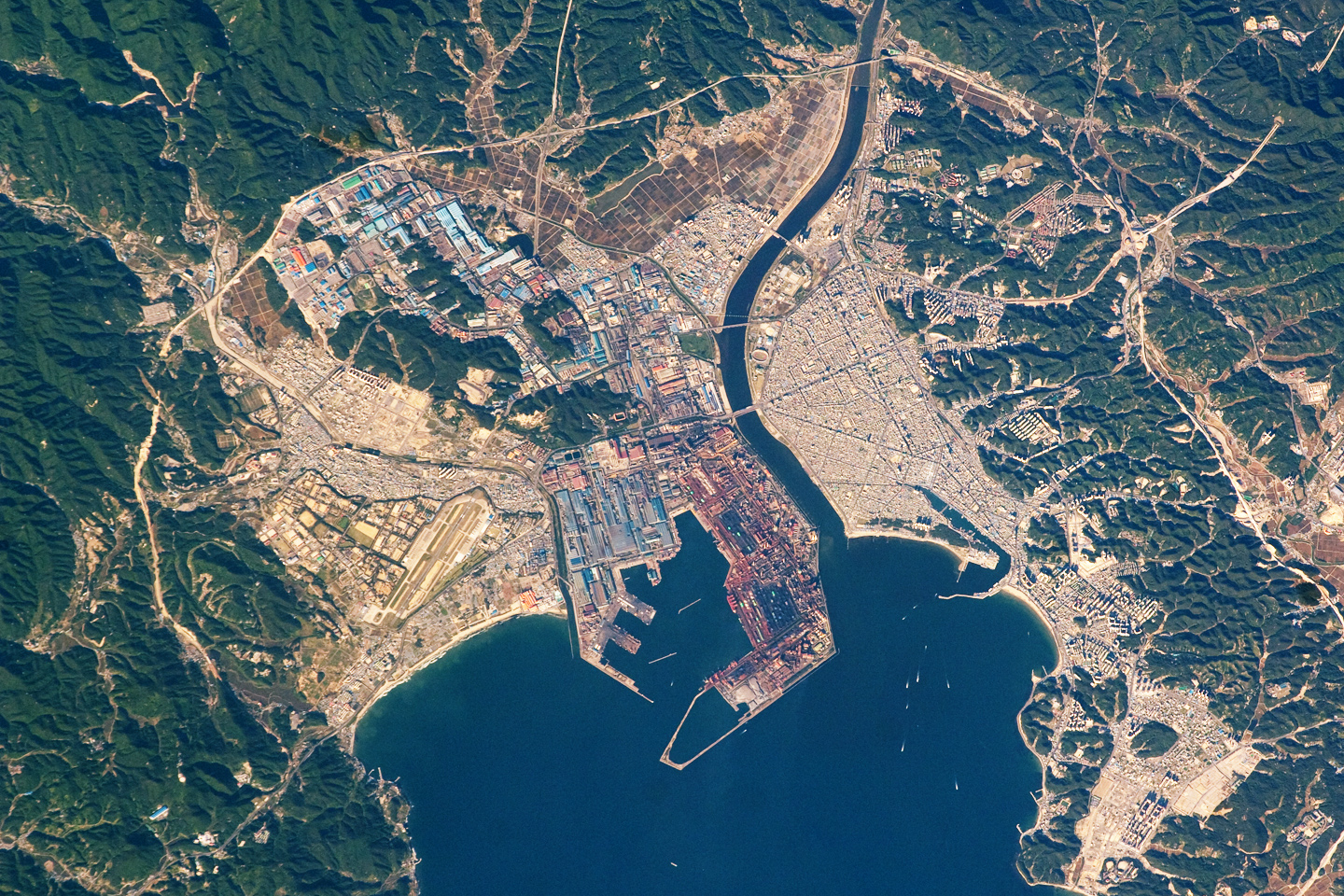Recently, a person compared Pohang to any other heavily industrial city: Pittsburgh (the U.S.) or Hamilton (Canada).
However, these other cities don't even come close to the reality of Pohang. Just look at the satellite image below. What you see is the second largest steel factory in the world.
It's so huge that it takes up a quarter of the city. And that Mordor glow with smoke that you see on so many night-time pictures? Yes, it's all real.
For more images, take a look at Flickr here, here and here.
Of course, the steel factory is only one of many sources of pollution: there are frequent winds from over-polluted China with smoke and sand that cause breathing issues, there is constant illegal waste burning by the population... you pick your poison.

This comment has been removed by the author.
ReplyDeleteTo the writer, and the owner of this blog:
ReplyDeleteThank you for sharing your personal opinion regarding Pohang. Let me clarify certain points, and describe the living condition of Pohang in more descriptive, objective ways.
Here is the official data from Korean Meteorological Administration(KMA) run by the Republic of Korea.
The writer pointed out/implied that Pohang's pollution problem-especially the air- is serious due to steal manufacturing company called POSCO.
One of the recognized factors in determining the air-pollution condition is: Asian Dust (which includes Particulate Matters). More information about Asian dust can be found on: http://en.wikipedia.org/wiki/Asian_Dust
If you go to the KMA's website: http://web.kma.go.kr/eng/weather/asiandust/timeseries.jsp
and click on menus to see/compare the current air pollution rate according to the cities, you can click on Timeseries/Analysis chart/Forecast Chart to "scientifically, objectively" understand and analyze the pollution status in Pohang.
Even though the city "Pohang" is not actually listed, "Uljin" is very close to Pohang, so you can use "Uljin's" factor to infer the pollution rate in Pohang. (Or even Ulsan, which is one of the largest cities in Korea where the Hyundai/KIA Motors and its sub-companies' factories are located. Which means that they should have at least similar amount of air pollution, if not more, rate.)
If you compare it using "eye-average," during April 2013,
Ulsan: averages out around 70 microgram per meter-cube.
Uljin: averages out around 50 microgram per meter-cube.
Other major cities:
Seoul: averages out around 80 microgram per meter-cube.
Daegu: averages out around 50 microgram per meter-cube.
Gwangju: averages out around 40 microgram per meter-cube.
As you can see, it is not Pohang; and it is not steal manufacturing company that is hurting one's breathing system. Rather, it is the amount of cars that individual city has(Seoul, Daegu has a lot of population, while there is no Steal Manufacturing/Car Production Facilities). As you can see, frankly, Seoul or other major cities contain more air-polluted materials rather than Pohang.
(I know this is a kind of unfortunate fact, however)I can assure all of you that, no matter where you go in Korea, unless you are employed in the countryside, the Asian Dust/Air pollution problem is inevitable. That is the reason why employers are trying to hire those who have great health condition (or at least try not to hire those who have respiratory problems due to Asian Dust issues.)
The information that I have given to you is retrieved from the government, academic statistic center (Korean Meteorological Administration(KMA)), and it is not based on individual's bias. I hope this helps for possible teachers, not necessarily in Pohang, to better understand pollution problem that is suggested within this post.
Again, if the pollution was a serious issue, Korean citizens living in the city, and other world-famous graduate students, scholars and eminent industrial leaders (mainly in Steal Manufacturing) would not come to Pohang to pursue their degree or life-lasting goals.
The satellite image of Korean Peninsula can also be found on the website that I have provided:
ReplyDeletehttp://web.kma.go.kr/eng/weather/asiandust/satellite.jsp
(you can change the date to see the air-pollution status of Korean Peninsula.)